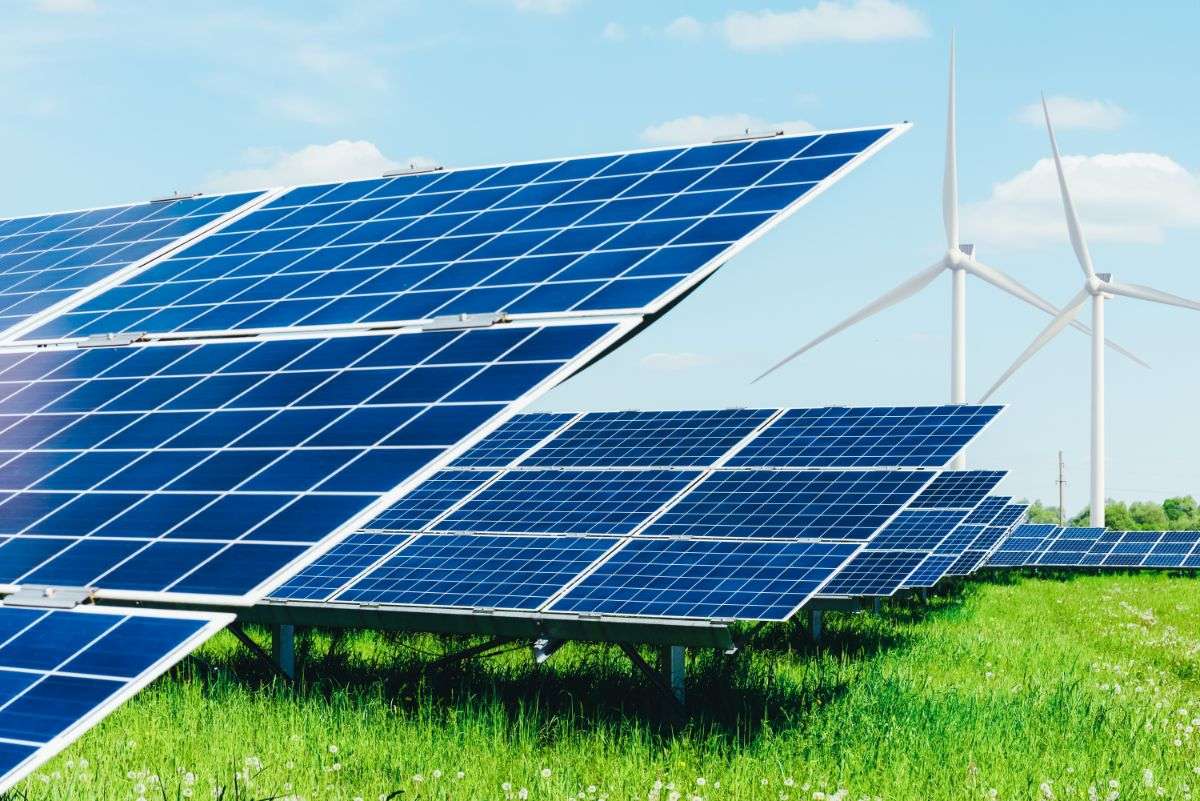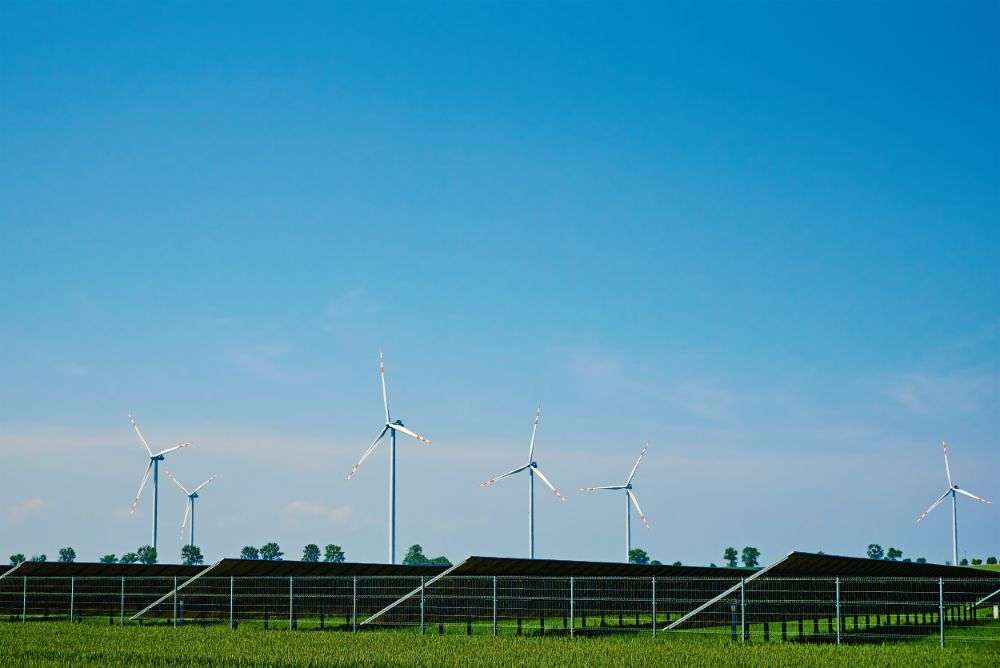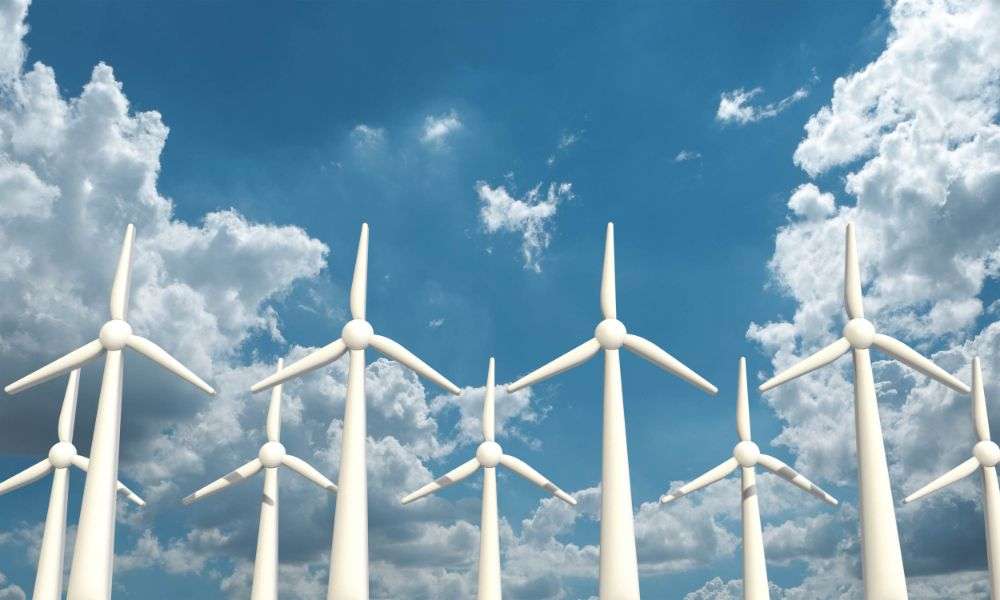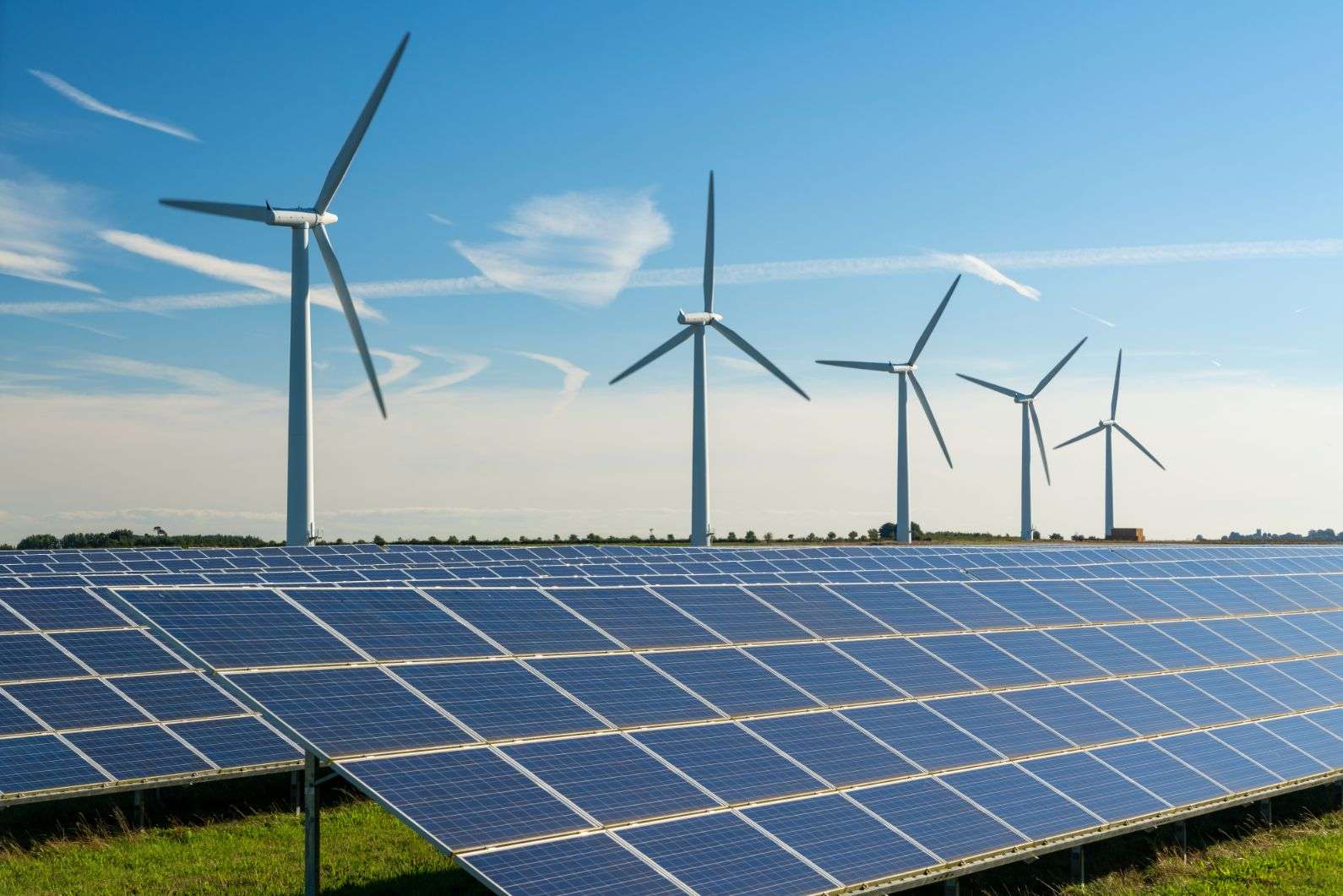The answer to “Solar vs Wind Energy, which is better?” depends on various factors and specific circumstances. Both solar and wind energy have their unique advantages and challenges, and the better option may differ based on location, energy needs, and goals.
Solar energy is an excellent choice for areas with ample sunlight, making it highly suitable for regions with a high number of sunny days throughout the year. Solar panels are versatile and can be installed on rooftops, open land, or integrated into building structures. They are relatively low maintenance and have seen significant cost reductions over time. Moreover, solar energy can be used on both large-scale utility projects and smaller residential installations, offering flexibility for various energy demands.
Wind energy shines brightest in regions with consistent and strong wind patterns, such as coastal areas or elevated terrains. Wind turbines are capable of generating electricity around the clock, making it a reliable option even during the night or on cloudy days. Offshore wind farms have gained momentum, tapping into the vast wind potential over the seas. Wind energy has also shown steady advancements in technology, leading to increased efficiency and cost-effectiveness.
Ultimately, the better choice between solar and wind energy depends on local factors like geographical location, wind patterns, solar irradiance, available space, and energy demand. Many modern energy strategies combine both solar and wind energy to create a well-balanced and reliable renewable energy portfolio. The transition to a sustainable future involves maximizing the potential of all renewable energy sources while considering the unique characteristics and needs of each region.
Introduction to Solar and Wind Energy
Renewable energy sources have become the superheroes of our modern world, fighting against climate change and providing a cleaner, greener future. Two key players in this renewable revolution are solar and wind energy. These dynamic duo powerhouses harness the gifts of nature to generate electricity and help reduce our reliance on fossil fuels. In this section, we’ll delve into the captivating world of solar and wind energy, exploring their unique features, strengths, and challenges.
Solar energy takes center stage with its ability to convert sunlight into electricity through photovoltaic cells. The sun, that fiery celestial ball in the sky, showers us with an abundance of energy every day, and we’re learning to harness its power like never before. Solar panels have made their way onto rooftops, deserts, and even backpacks, soaking up rays and transforming them into clean electricity. They are the true sun-chasers, tracking and capturing the sun’s rays wherever they roam. One of the perks of solar energy is its versatility – it can be used on both large-scale solar farms and in off-grid residential installations. From urban jungles to remote areas, solar energy is a powerful ally in the fight for a sustainable future.
Wind energy, on the other hand, taps into the boundless energy of the wind. Those gusts of air that ruffle our hair can be harnessed by wind turbines and transformed into electricity. Picture vast fields of sleek, spinning blades gracefully catching the wind’s dance, generating power as they twirl. Wind energy is a master of adaptation, as wind farms can be installed on land or offshore, catching the wind’s currents wherever they blow. Wind turbines often work in harmony, forming majestic wind farms that paint breathtaking landscapes across the horizon. With their growing popularity, wind energy systems are now a prominent player in the global energy mix.
As we explore the thrilling rivalry between solar and wind energy, we’ll venture into the realm of efficiency, cost-effectiveness, environmental impact, and the unique challenges they face. So, fasten your seatbelts, because this showdown between the sun and the wind is bound to spark some illuminating revelations!
Understanding Solar Energy: Pros and Cons

Welcome to the electrifying world of solar energy! It’s time to shine a light on the pros and cons of harnessing the power of the sun. First up, the pros! Solar energy is the undisputed rockstar when it comes to sustainability. It’s a clean, renewable source of power that emits zero greenhouse gases, making it an eco-friendly choice that leaves a smaller carbon footprint. Moreover, solar panels require little maintenance, and once they’re installed, they can silently soak up the sun’s rays, generating electricity without making a peep. This silent efficiency makes solar panels a favorite among those who value peace and quiet.
Now, let’s address the cons that occasionally cloud the sunny skies of solar energy. One downside is its reliance on sunlight. Cloudy days or nighttime can temporarily hinder the generation of electricity, making it less consistent than other sources. Additionally, the initial setup cost of solar panels can be relatively high, deterring some potential green energy enthusiasts. However, fear not! With advancements in technology and increasing demand, solar costs have been on a steady decline, making it more accessible to a broader audience.
So, whether you’re envisioning a rooftop adorned with solar panels or contemplating a solar-powered charging station for your electric vehicle, remember that solar energy has both its shining moments and moments in the shade.
Harnessing Wind Energy: Advantages and Disadvantages

Let’s set sail into the gusty world of wind energy, where turbines catch the breeze to power our wildest dreams. First, let’s hoist the sails and explore the exciting advantages of wind energy. One of its most significant benefits is its limitless supply. As long as the Earth’s atmosphere exists, the wind will continue to blow, providing an endless source of renewable energy. Wind farms can also be installed both onshore and offshore, utilizing different wind patterns to generate power, making it a versatile option for energy production.
Now, it’s time to brace for the headwinds and confront the challenges faced by wind energy. One drawback is the potential impact on wildlife, particularly birds and bats. Wind turbines can pose a risk of collision for these feathered and furry friends. However, researchers and engineers are working hard to find innovative solutions to minimize these impacts, including bird-safe designs and strategic placement of wind farms. Additionally, like any technological marvel, wind energy has its initial setup costs. However, once the turbines are up and spinning, they boast relatively low operating expenses, keeping the winds of change blowing in favor of renewable energy.
Environmental Impact: Solar vs Wind Energy

Let’s dive deep into the crystal-clear waters of the environmental impact of solar and wind energy. Picture this: the sun’s rays caressing the Earth, and the wind gently rustling through the trees. Both solar and wind energy share a common goal of reducing greenhouse gas emissions, making them eco-champions in the battle against climate change.
Solar energy boasts a near-spotless environmental record. When solar panels generate electricity, they release no harmful pollutants, keeping the air clean and crisp. Unlike coal-fired power plants or natural gas facilities, solar energy doesn’t spew out carbon dioxide or other noxious gases, ensuring a breath of fresh air for all. Moreover, as we soak up the sun’s rays, we’re not depleting any finite resources or disrupting ecosystems, making solar a gentle guardian of the environment.
Wind energy, like solar, is a green superhero in its own right. Wind turbines produce zero greenhouse gas emissions during operation, making them a powerful ally in the fight against climate change. Furthermore, wind energy requires no water for its day-to-day operations, saving precious water resources compared to conventional power plants. However, it’s essential to acknowledge that wind farms can have localized environmental impacts, such as potential bird and bat collisions, noise disturbances for nearby residents, and visual impacts on landscapes. But fear not, as research and innovation are underway to minimize these effects and ensure harmony between wind energy and the environment.
Both solar and wind energy prove themselves as champions of sustainability, striving to preserve the planet for generations to come. It’s awe-inspiring to witness these renewable energy titans embrace their responsibility to protect nature while providing us with clean, reliable power.
Efficiency and Capacity: Comparing Solar and Wind Power

These energy contenders are all about delivering the most bang for our buck, so let’s see how they stack up!
Solar energy proves to be a true efficiency star when it comes to converting sunlight into electricity. Modern solar panels boast impressive conversion rates, typically ranging from 15% to 20% or even higher. The efficiency of solar panels has been on a steady incline, thanks to ongoing research and technological advancements. What’s more, solar energy systems can be deployed on various scales, from small residential installations to massive solar farms, ensuring flexibility in meeting different energy needs. However, the sun occasionally plays hide-and-seek with us behind clouds or sets in the evening, leading to temporary dips in electricity generation. But don’t worry; solar battery storage and smart grid technologies are stepping in to keep the lights on when the sun takes a break.
Now, let’s see how wind energy holds up in the efficiency ring. Wind turbines have come a long way in terms of design and engineering, making them efficient power generators. Modern turbines can convert wind energy into electricity with efficiency rates that hover around 40% or more. One of the significant advantages of wind energy is that it works tirelessly, even during cloudy or nighttime conditions. As long as the wind blows, the turbines keep spinning, providing a steady stream of electricity. However, the wind isn’t always in a cooperative mood, and its intensity can fluctuate, affecting the overall capacity factor of wind energy systems. Nonetheless, combining wind farms in different locations can help smooth out these variations, ensuring a more stable power supply.
In the electrifying showdown of efficiency and capacity, both solar and wind energy demonstrate their prowess in transforming nature’s gifts into usable power. With technology continuously evolving, we’re witnessing a thrilling race towards even greater efficiency, pushing the boundaries of clean energy generation.
Cost Analysis: Solar Energy vs Wind Energy

Solar energy has been shining brighter than ever on the economic front. The cost of solar panels has witnessed a remarkable decline over the years, thanks to technological advancements and increased production. Homeowners and businesses alike have been quick to seize the opportunity, with solar installations popping up on rooftops and vacant lands. Solar’s ability to be installed on both large-scale and small-scale systems adds to its financial appeal, providing an array of options to fit diverse budgets. Moreover, once installed, solar panels boast low maintenance costs, requiring little more than an occasional gentle cleaning to keep them beaming at their best.
Meanwhile, the wind has been picking up quite a storm in the cost-effectiveness department for wind energy. The price of wind turbines has been following a similar downward trend as solar panels, making them more economically viable than ever before. Large-scale wind farms have emerged as a cost-competitive source of electricity, often rivaling or even beating conventional fossil fuel power plants in terms of price per kilowatt-hour. Furthermore, wind energy’s scalability makes it an attractive option for utility-scale electricity generation. However, the upfront costs of wind projects can be considerable, especially for offshore installations, which require specialized equipment and construction. Yet, as technology advances and more investments are made, the cost of wind energy is poised to continue its downward journey.
Integration and Grid Stability: Solar and Wind Power Challenges

In this electrifying chapter, we delve into the challenges of integrating solar and wind power into the existing energy grid. While these renewable energy champions have been gaining popularity, their variable nature presents some unique obstacles that require clever solutions.
Solar energy may bask in the glory of sunshine, but its intermittent nature can pose grid stability challenges. As the sun sets and clouds roll in, solar generation experiences fluctuations that can strain the electricity grid’s stability. To tackle this challenge, grid operators must be prepared to balance supply and demand in real-time, relying on energy storage systems like batteries or pumped hydro to store excess solar power during sunny periods and release it when needed. Additionally, advancements in smart grid technologies and forecasting algorithms play a crucial role in predicting solar generation patterns, allowing grid operators to optimize energy dispatch and maintain a steady flow of electricity.
Now, let’s feel the winds of change as we explore the challenges of wind energy integration. The variability of wind speed can lead to momentary surges or drops in power generation, affecting grid stability. To address this, grid operators can utilize a mix of energy sources, including other renewables, natural gas, or energy storage, to balance out fluctuations and ensure a stable electricity supply. Additionally, well-designed transmission networks that connect geographically diverse wind farms can help mitigate the impact of local wind variations, providing a more consistent power supply to consumers. Integrating wind energy into the grid requires meticulous planning and coordination, but it’s a challenge worth embracing for a greener and more sustainable energy future.
Geographic Suitability: Solar and Wind Energy Distribution

In this thrilling exploration, we venture into the geography of renewable energy, unraveling the mysteries of where solar and wind energy shine brightest. As the sun rises and the winds whisper, let’s uncover the secrets of their geographic suitability.
Solar energy has a radiant advantage, as it can be harnessed almost anywhere the sun graces us with its presence. Regions closer to the equator, such as tropical and desert areas, bask in abundant sunlight year-round, making them prime locations for solar installations. Sun-kissed landscapes like Arizona, California, and parts of Africa and the Middle East have embraced solar energy with open arms, tapping into its potential to power homes and businesses. However, solar isn’t limited to just the sunniest spots. Even areas with moderate sunlight can benefit from solar installations, especially with improving panel efficiency and energy storage technologies.
Meanwhile, wind energy has its own preferred playgrounds, where the winds dance with delight. Coastal regions and elevated terrains often experience stronger and more consistent winds, creating ideal conditions for wind energy. From the breezy plains of the American Midwest to the gusty shores of Denmark and Scotland, wind farms have found a home in these windy wonderlands. However, wind energy isn’t solely reserved for coastal areas and mountains. Advances in wind turbine technology have made it possible for wind farms to thrive in various locations, provided they have sufficient wind resources to justify the investment.
As we traverse the world’s diverse landscapes, it’s evident that both solar and wind energy have their geographic niches. Each has its shining moments in different regions, offering a harmonious balance of renewable energy distribution. And as technology continues to evolve, we’ll witness the renewable energy revolution reaching even more corners of the globe, illuminating our path toward a sustainable future.
Future Outlook: The Role of Solar and Wind Energy in Sustainable Development

As we turn our gaze to the horizon, the future of renewable energy appears brighter than ever. Solar and wind energy stand tall as pillars of sustainable development, holding the key to a cleaner, greener world.
Solar energy is set to bask in an era of unprecedented growth. As technology continues to advance, solar panels become more efficient and cost-effective, making them a compelling choice for energy generation. The integration of solar power with energy storage solutions will further enhance its reliability, ensuring a steady supply of clean electricity day and night. Solar energy’s scalability and versatility make it a formidable player in both developed and developing regions, empowering communities and industries alike. From powering homes and businesses to electrifying remote areas, solar energy will undoubtedly play a leading role in the sustainable transformation of our global energy landscape.
But the winds of change are just as exhilarating! Wind energy is poised to soar to new heights in the coming years. As wind turbine technology advances, it will become more efficient and capable of capturing even more energy from the breeze. Offshore wind farms, with their vast untapped potential, will take center stage, harnessing the powerful winds at sea to supply electricity to densely populated coastal regions. Innovations in floating wind turbines will open up new possibilities for wind energy expansion in deep waters, further boosting its contribution to sustainable development. By collaborating with solar and other renewable sources, wind energy will create a harmonious symphony of clean power, paving the way for a more resilient and sustainable energy future.
In this captivating glimpse into the future, solar and wind energy stand as champions of change, guiding us toward a world where sustainability and progress go hand in hand. As we embrace these renewable energy superheroes, we embark on a journey of innovation, transformation, and hope.
The rivalry between solar and wind energy has shown that both play vital roles in our journey toward a sustainable future. Each brings its strengths and unique attributes to the table, and the better choice depends on various factors specific to your location and energy needs. As we navigate the exciting world of renewable energy, let’s remember that the most impactful approach often involves a combination of both solar and wind power, embracing the diversity of clean energy solutions.
If you’re interested in exploring the perfect balance of renewable energy for your specific requirements, click this link to check out our carefully curated product recommendations. Together, we can join the renewable energy revolution, shaping a greener and more prosperous tomorrow for generations to come. Let’s harness the power of the sun and the wind, hand in hand, in our quest for a brighter and more sustainable future.

